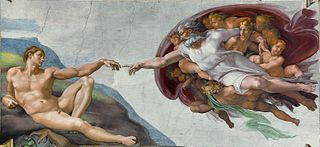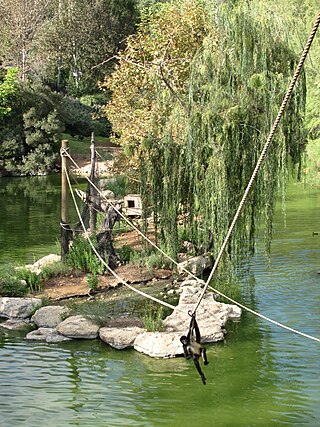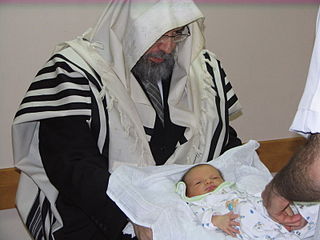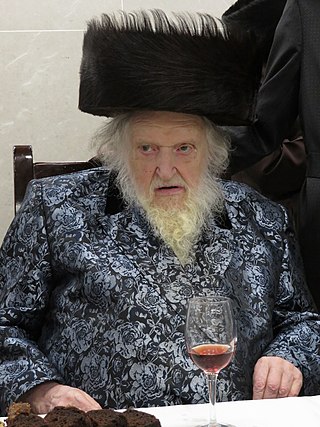
Sukkot is a Torah-commanded holiday celebrated for seven days, beginning on the 15th day of the month of Tishrei. It is one of the Three Pilgrimage Festivals on which those Israelites who could were commanded to make a pilgrimage to the Temple in Jerusalem. In addition to its harvest roots, the holiday also holds spiritual importance with regard to its abandonment of materialism to focus on nationhood, spirituality, and hospitality, this principle underlying the construction of a temporary, almost nomadic, structure of a sukkah.

Shavuot, or Shvues in some Ashkenazi usage, commonly known in English as the Feast of Weeks, is one of the biblically-ordained Three Pilgrimage Festivals. It occurs on the sixth day of the Hebrew month of Sivan; in the 21st century, it may fall between May 15 and June 14 on the Gregorian calendar.

Beit Shemesh is a city located approximately 30 kilometres (19 mi) west of Jerusalem in Israel's Jerusalem District, with a population of 141,764 in 2021.
Natan is a masculine given name, a surname and the Hebrew origin of the name Nathan which may refer to:

Jewish views on evolution includes a continuum of views about the theory of evolution, experimental evolution, the origin of life, age of the universe, evolutionary creationism, and theistic evolution. Today, many Jewish people accept the theory of evolution and do not see it as incompatible with traditional Judaism, reflecting the emphasis of prominent rabbis such as the Vilna Gaon and Maimonides on the ethical rather than factual significance of scripture.

Natan Slifkin, popularly known as the "Zoo Rabbi," is a British-born Israeli Modern Orthodox community rabbi and the director of the Biblical Museum of Natural History in Beit Shemesh, Israel. Slifkin is best known for his interests in zoology, Judaism's relationship to evolution, Jewish and biblical history, and his writing on these topics.
Dushinsky is one of the few Hasidic dynasties not named after the place where it originated; instead, it is named after the rebbe's surname. It is relatively new, and became a dynasty in Jerusalem, where it is centered today. Unlike other Hasidic groups, it does not originate from a Hasidic background, but from the talmidim (students) of Moses Sofer.

Rabbi Avishai Chaim David is the Rosh Yeshiva of Yeshivat Torat Shraga (YTS) in Bayit VeGan, Jerusalem, Israel, and is the founding rabbi of Beit Medrash Torani Leumi (BMTL) in Beit Shemesh, which he left in August, 2017. He is currently the Rabbi of Kehillas Beis Tefillah Yonah Avraham in Ramat Beit Shemesh.

Har HaMenuchot is the largest cemetery in Jerusalem. The hilltop burial ground lies at the western edge of the city adjacent to the neighborhood of Givat Shaul, with commanding views of Mevaseret Zion to the north, Motza to the west, and Har Nof to the south. Opened in 1951 on 300 dunams of land, it has continually expanded into new sections on the northern and western slopes of the hill. As of 2008, the cemetery encompasses 580 dunams in which over 150,000 people are buried.

The Tisch Family Biblical Zoo in Jerusalem, popularly known as the Jerusalem Biblical Zoo, is a zoo located in the Malha neighborhood of Jerusalem. It is famous for its Afro-Asiatic collection of wildlife, many of which are described in the Hebrew Bible, as well as for its success in breeding endangered species. According to Dun and Bradstreet, the Biblical Zoo was the most popular tourist attraction in Israel from 2005 to 2007, and logged a record 738,000 visitors in 2009. The zoo had about 55,000 members in 2009.

HaRav Mordechai Yitzchak HaLevi Willig is an Orthodox rabbi and rosh yeshiva at Yeshiva University in Washington Heights, Manhattan. He is often known to his students as the Ramu, which is the transliteration of the acronym of the Hebrew letters Reish, Mem, and Vav, which spell out the first letters of Rav Willig's title and name.

Yaacov Haber is a rabbi has taught Jews about Jewish heritage for almost thirty years.
Moshe Meiselman is an American-born Orthodox rabbi and rosh yeshiva (dean) of Yeshiva Toras Moshe in Jerusalem, which he established in 1982. He also founded and served as principal of Yeshiva University of Los Angeles (YULA) from 1977 to 1982. He is a descendant of the Lithuanian Jewish Soloveitchik rabbinic dynasty.

David Avraham Spektor, also spelled Schpektor (9 Av 5715 – 12 Tishrei 5774) was a Dutch–born Israeli rabbi. He was born in Amsterdam, the Netherlands and emigrated to Israel in 1973, after the Yom Kippur war. Spektor studied at several yeshivas for ten years, primarily at Yeshivat Mercaz HaRav and the Meretz Kollel. He was ordained by the Chief Rabbinate of Israel as both a neighbourhood rabbi and city rabbi.

Moshe Sternbuch Hebrew: משה שטרנבוך) is a British-born Israeli Haredi rabbi. He serves as the Ra'avad of the Edah HaChareidis, vice president of the Rabbinical Court in Jerusalem, and the rabbi of the Gra Synagogue in the Har Nof neighbourhood.
Judaism and environmentalism intersect on many levels. The natural world plays a central role in Jewish law, literature, liturgy, and other practices. Within the arena of Jewish thought, beliefs vary widely about the human relationship to the environment.

Perek Shira is an ancient Jewish text. There are a number of versions extant, some associated with the Ashkenazic tradition, some with the Sephardic, and some with the Mizrahi Jews tradition. It was first printed, with a commentary, in Moses ben Joseph de Trani's Bet Elohim (1576), but it is mentioned as early as the 10th century. It contains 85 sections, in each of which elements of creation, beginning with the celestial and ending with dogs, use biblical and rabbinic verses in order to sing God's praises. Use of Perek Shira used to be prevalent in the daily liturgy and medieval philosopher Joseph Albo wrote that whoever recites Perek Shira is guaranteed a place in the World to Come.
Yosef Tzvi Dushinsky is the third Rebbe of the Dushinsky Hasidic dynasty of Jerusalem, Israel. He assumed the leadership of the Hasidut upon the death of his father, Rabbi Yisroel Moshe Dushinsky, second Dushinsky Rebbe, in 2003. The Dushinsky Hasidic movement was founded by his grandfather and namesake, Rabbi Yosef Tzvi Dushinsky, in Jerusalem in the 1930s. Both his father and grandfather also served as Gaavad of the Edah HaChareidis.
Yaakov Mutzafi was a rabbi and kabbalist. The last spiritual leader of the ancient Jewish community of Iraq, he moved to Israel ahead of the Jewish masses when they were finally airlifted there in 1952.

Adullam-France Park, also known as Parc de France-Adoulam, is a sprawling park of 50,000 dunams (ca. 12,350 acres) in the Central District of Israel, located south of Beit Shemesh. The park, established in 2008 for public recreation, features two major hiking and biking trails, and four major archaeological sites from the Second Temple period. It stretches between Naḥal Ha-Elah, its northernmost boundary, to Naḥal Guvrin, its southernmost boundary. To its west lies the Beit Guvrin-Beit Shemesh highway, and to its east the "green line" – now territories under joint Israeli-Palestinian Arab control – which marks its limit.
























